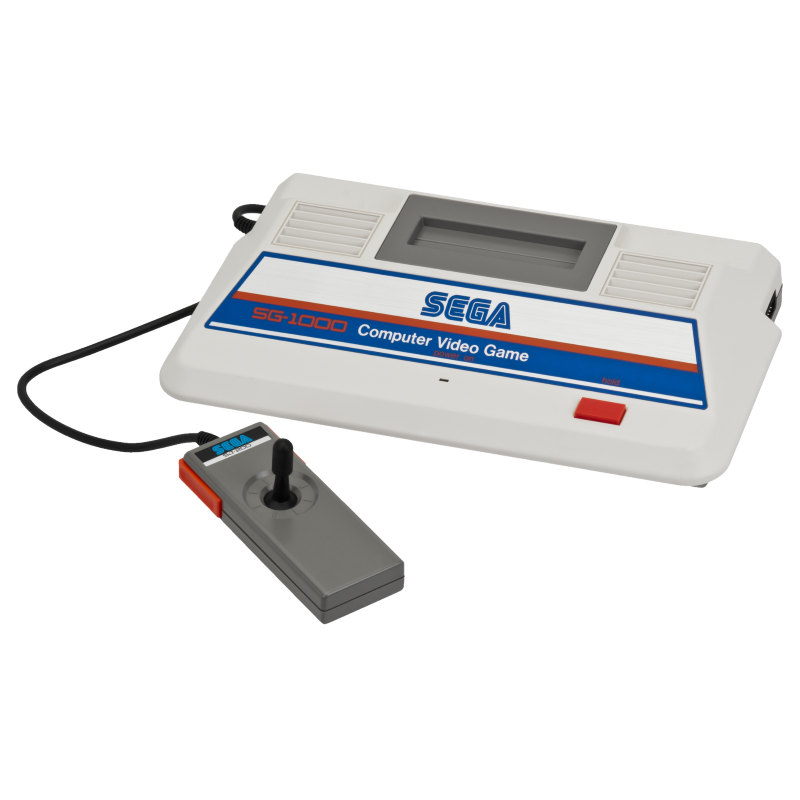|
History
In the early 1980s, Sega Enterprises, Inc., was one of the top five arcade games manufacturers active in the United States. In 1982, the revenue generated from the arcade industries was on the down low and Gulf and Western, the parent company of Sega Enterprises at the time, decided to sell its North American arcade manufacturing organization and the licensing rights for its arcade games to Bally Manufacturing. The company retained Sega’s North American R&D operation, as well as its Japanese subsidiary, Sega Enterprises, Ltd.
As Sega was pulling out of the arcade industry, Sega Japan president Hayao Nakayama advocated that the company leverage its hardware expertise to move into the home computer market in Japan. The first product developed was the SC-3000, a computer with a built-in keyboard, but when Sega learned of Nintendo’s plans to release a games-only console, they began developing the SG-1000.
Release
The SG-1000 was first released in Japan on July 15, 1983, at JP¥15,000. It was released on the same day as Nintendo launched the Family Computer (Famicom) in Japan. Though Sega themselves only released the SG-1000 in Japan, rebranded versions were released in several other markets worldwide. Released at nearly the same time as the Japanese version, the SG-1000 was released in Australia through John Sands Electronics, in New Zealand by Grandstand Leisure, in Taiwan by Aaronix and also in Italy and Spain.
Internally, the SG-1000 has largely identical hardware to the ColecoVision, but with the SG-1000 having a faster VRAM chip (by Fujitsu). This led to the release in Taiwan of an unauthorized clone that plays both SG-1000 and ColecoVision games named Dina 2 in 1 . The console was later released in the U.S. under the brand Telegames Personal Arcade.
As the SG-1000 was based on the same hardware as the SC-3000, the console could run all SC-3000 games and applications, with the exception of Music and Basic Cartridge.
Demise
The SG-1000’s launch did not prove to be successful. The three launch games, all of which were ported from Sega’s VIC dual-arcade board, lacked the name recognition of Famicom launch games Donkey Kong, Donkey Kong Jr., and Popeye. Due in part to the SG-1000’s steadier stream of releases (21 SG-1000 games by the end of 1983, as compared to only 9 Famicom games), and in part to a recall on Famicom units necessitated by a faulty circuit, the SG-1000 chalked up 160,000 units in sales in 1983, far exceeding Sega’s projection of 50,000 units.
By 1984, the Famicom’s success began to outpace the SG-1000. The Famicom had more advanced hardware, allowing it to perform smoother scrolling and more colorful sprites, and Nintendo boosted its games library by courting third-party developers, whereas Sega was less than eager to collaborate with the same companies they were competing with in arcades. The SG-1000 was also right in the middle of the Japanese Console War, coming up against 7 other game consoles. In July 1984, Sega decided to discontinue the SG-1000 and pursue with the SG-1000 II, and updated version of their current console.
Games
Sega published 68 games for the console while the Othello Multivision, a licensed clone published 7, for a grand total of 75 compatible games.
- Bank Panic (1985)
- The Black Onyx (1987)
- Bomb Jack (1985)
- Borderline (1983)
- The Castle (1986)
- Chack’n Pop (1985)
- Champion Baseball (1983)
- Champion Billiards (1986)
- Champion Boxing (1984)
- Champion Golf (1983)
- Champion Ice Hockey (1985)
- Champion Kendou (1986)
- Champion Pro Wrestling (1985)
- Championship Lode Runner (1985)
- Champion Soccer (1984)
- Champion Tennis (1983)
- Choplifter (1985)
- Congo Bongo (1983)
- C_So! (1985)
- Doki Doki Penguin Land (1985)
- Dragon Wang (1985)
- Drol (1985)
- Elevator Action (1985)
- Exerion (1983)
- Flicky (1984)
- Girl’s Garden (1984)
- Golgo 13 (1984)
- GP World (1985)
- Gulkave (1986)
- Hang On II (1985)
- H.E.R.O. (1985)
- Home Mahjong (1984)
- Hustle Chumy (1984)
- Hyper Sports (1985)
- Lode Runner (1984)
- Loretta no Shouzou: Sherlock Holmes (1987)
- Mahjong (1983)
- Monaco GP (1983)
- Ninja Princess (1986)
- N-Sub (1983)
- Orguss (1984)
- Othello (1985)
- Pacar (1983)
- Pachinko (1983)
- Pachinko II (1984)
- Pitfall II: The Lost Caverns (1985)
- Pop Flamer (1983)
- Rock n’ Bolt (1985)
- Safari Hunting (1983)
- Safari Race (1984)
- Sega Flipper (1983)
- Sega Galaga (1983)
- Serizawa Hachidan no Tsumeshogi (1983)
- Shinnyuushain Tooru-Kun (1985)
- Sindbad Mystery (1983)
- Soukoban (1985)
- Space Armor (1984)
- Space Invaders (1985)
- Space Slalom (1983)
- Star Force (1985)
- Star Jacker (1983)
- Super Tank (1986)
- Terebi Oekaki (1986)
- Wonder Boy (1986)
- Yamato (1983)
- Zaxxon (1985)
- Zippy Race (1983)
- Zoom 909 (1985)
Othello Multivision
- 007 James Bond (1984)
- Challenge Derby (1984)
- Guzzler (1983)
- Okamoto Ayako no Match Play Golf (1984)
- Q*bert (1983)
- San-nin Mahjong (1984)
- Space Mountain (1984)

